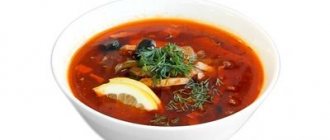The olive tree is characterized by amazing vitality. It can grow even from the smallest root left in the ground. The plant can stand for centuries, even if it is split by lightning. In Mediterranean countries it is believed that those who consume the fruits of the plant receive the same vitality. It is worth taking a closer look at how olives are good for our health.
The fruits of the olive tree, like olive oil, are very highly valued. Processing methods that eliminate their bitterness have been discovered relatively recently.
How to choose a canned product
Many people do not understand the difference between olives and black olives. These are the fruits of the same olive tree , but collected at different periods of their ripeness.
When ripe, they can change color from bright green to dark purple or black. Olives are young fruits that have not yet ripened , while olives are fully ripened.
The fruits of the olive tree are:
- Green. They are collected before technical maturity, but are already of normal size.
- Combined. They are collected during the ripening period, but before full maturity.
- Black. They are harvested when fully ripe.
- Blackened by oxidation. The fruits are unripe, but color is achieved by treating with an alkaline solution.
Using the labeling system, it is difficult to determine which olives were prepared traditionally and which were prepared using the accelerated technology. If they were artificially colored, the brine will contain iron gluconate (E579) .
Olives also differ by variety. Their main characteristic is their caliber. Its value is equal to the number of fruits per 1 kg of dry weight.
Olives are harvested entirely by hand, which is why they are expensive.
To ensure that the selected product is of decent quality, consider the following points:
- Please note the manufacturer. The world's main suppliers of olives are Italy, Greece, Spain. But they are also produced in Israel, Chile, Tunisia, Argentina. Elite Greek olives are the most expensive. They have a rich taste, dense flesh, and a small bone that is easily separated.
- Consider the expiration date. Naturally prepared olives cannot be stored for more than six months. If the shelf life on the package is longer, then preservatives (lactic acid) were used. They can increase the shelf life up to three years, but worsen the taste of the product and its benefits.
- Olives can be sold in glass or tin containers. The tin one is cheaper, it does not allow light to pass through. The glass one allows you to see the size of the olives before purchasing. Glass will not react with the product. Do not buy olives with a cloudy, opaque marinade - they are of poor quality.
- If the product is good, the caliber will be indicated on the packaging. The smaller it is, the larger the fruits will be. Standard – 80-320 olives. The maximum spread is indicated on the can, for example, 120/150. If there is too much scatter, it makes sense to say that different varieties are pickled in the container.
- Ripe completely black olives are used not for preservation, but for the production of olive oil. The black color is the result of processing. Don't be afraid of the unusual tone of the fruit. It depends on the place where the plant grows, the variety, and the level of maturity - from pink to black-violet.
- If you want to buy a quality product, be prepared to spend money. Good olives are hand-picked and take a long time to prepare, so they cannot be cheap.
We recommend reading: The benefits and harms of pumpkin for the body, how much you should eat
Other gradations of olive fruit
One of the main characteristics of olives is their caliber (the number of fruits in one kilogram of product). For example, the numbers 200/250 mean that a kilogram of olives contains at least 200 and no more than 250 pieces. Calibers available:
- small – 280/300 olives;
- medium – 180/200 fruits;
- large – 60/80 olives.
Small-caliber fruits, as a rule, are used to make olive oil, but in Russia they are very popular in their natural form.
Chemical composition, calorie content and nutritional value
Olives are a valuable nutritious product . They include about a hundred active components, vitamins A, C, E. The pulp contains fats, proteins, sugars, pectins, ash components, and plant lipids. The peel is also useful.
100 g of product contains 2.2 g of protein, 5.1 carbohydrates and 10.5 fat.
Calorie content of 100 g of olives – 166 kcal. One piece weighing about 3 g contains approximately 5 kcal.
Recipes with olives
Shrimp salad for lunch
100 g of boiled brown rice, a can of dried olives or regular pickled olives, but washed with running water, 200 g of chopped champignons, poached in water or boiled, 1 white onion, a bunch of cilantro, 200 g of peeled boiled shrimp, 1 tablespoon of sesame oil , a little dried ginger.
Cool everything that was cooked for this salad to room temperature. Cut the olives in half, put everything together in a salad bowl, mix, season with sesame oil and dried ginger.
Rye bread with olives
A mixture of fitness flour for baking bread or half a glass of flaxseed flour, half a glass of rye flour, 1 serving of yeast, dry but “live” is required, 4 egg whites, 1 can of olives, a tablespoon of olive oil, a tablespoon of rye or wheat bran.
Soak the yeast according to instructions. Mix the flour with a little salt, beat the whites until stiff, mix, add yeast, and very finely chopped olives, plus bran and oil. Knead the dough, leave it in the kitchen under a towel to rise for an hour and a half. Preheat the oven to 200 degrees. Roll out the dough as for noodles, sprinkling with rye flour, roll it up, lightly brush the top with olive oil and bake for 45 minutes, checking for doneness with a wooden toothpick.
Salad with spinach and olives
400 g fresh or frozen spinach, 200 g chicken breast, 1 clove garlic, 1 package sun-dried Italian tomatoes, 1 bunch of basil, 1 tablespoon olive oil, 1 can olives or black olives, 400 g fresh yellow cherry tomatoes, 2-3 fresh yellow bell peppers
Wash the spinach and steam it along with the chicken breast. The meat can be cut into strips to make it cook faster. Soak the tomatoes in plain water for 20 minutes. Place in a frying pan with olive oil and water, heat, add basil, simmer the sauce for 5 minutes, stirring, leave to cool. Once cool, rub through a hard sieve and discard films and other unnecessary elements. Chop all other recipe ingredients. Add spinach to the sauce and puree in a blender. Season chicken breast with vegetables and olives with thick green sauce.
Shopska salad
100 g of unsalted cheese, 1 can of olives or olives, 2-3 tomatoes of good ripeness, 1 fresh cucumber, 1 red onion, 1 red and 1 yellow bell pepper, and a mixture for the sauce - fresh thyme, a teaspoon of apple cider vinegar and a tablespoon of olive oils
Chop the thyme, mix with vinegar and oils and blend with a blender at very high speed. Crumble the cheese with your hands. Chop the remaining ingredients as you like, mix, and season with green sauce.
Another delicious recipe – Squid with celery, olives and onions
Health Benefits
The fruits of the olive tree contain valuable polyunsaturated fats that help normalize cholesterol levels. Proteins, sugars, vitamins, mineral salts, and esters are valuable.
The composition contains minerals (copper and sodium), dietary fiber. Dark olives are rich in antioxidants.
This combination of beneficial substances has a beneficial effect on the entire body, maintaining and strengthening health.
Regular consumption of olives and olive oil helps normalize and strengthen the functioning of the gastrointestinal tract. The fruits have one unique feature: they almost completely eliminate the risk of stone formation in various organs.
To ensure the prevention of this problem, it is enough to eat only five pieces a week . It is advisable to eat them with seeds, but if you have digestive problems, their use may be contraindicated.
The following properties of olives are known:
- Help reduce the risk of a number of types of tumors.
- Ensure normal functioning of the digestive system and fight constipation.
- Normalizes the functioning of the gallbladder.
- Restore the gastrointestinal mucosa.
- They help speed up the healing of skin damaged due to burns, cuts, and bruises.
- Cleanse the body.
- Normalizes cholesterol levels.
- Helps preserve calcium in bones.
- Reduce the likelihood of angina pectoris and cardiovascular system disorders.
- Calms the nervous system.
- Maintains good mood, energy, vigor.
Regular use of the product helps to significantly reduce the risk of vascular diseases and heart attack.
Composition and calorie content of olives
The beneficial properties of black olives are involved in various areas. The fruits, olive pits and leaves are used to treat various diseases, as additives in cosmetics and dishes.
| Compound | Quantity per 100 g |
| Calorie content | 81 kcal |
| Squirrels | 0.97 g |
| Fats | 6.87 g |
| Carbohydrates | 3.11 g |
| Alimentary fiber | 2.5 g |
| Ash | 2.22 g |
| Water | 84 g |
| K | 9 mg |
| Ca | 94 mg |
| Fe | 3.32 mg |
| Mg | 4 mg |
| Mn | 0.02 mg |
| Ph | 3 mg |
| Na | 900 mg |
| Cu | 226 mg |
| Se | 0.9 mg |
| Zn | 0.81 mg |
Canned black olives contain a large amount of useful vitamins, macro- and microelements, omega-3 and omega-6, essential and non-essential acids, as well as saturated, mono- and polyunsaturated fatty acids. They also include:
We recommend reading: Omega 3: what it is useful for, how to take it, what products it contains
- vitamin A, beta carotene, beta cryptoxanthin, lutein, zeaxanthin;
- B vitamins: thiamine, choline, pyridoxine, pantothene;
- ascorbic acid (vitamin C);
- alpha tocopherol, vitamin E;
- phyloquinone;
- vitamin PP.
They are natural antioxidants that help strengthen the immune system and improve the functioning of the cardiovascular system, improving blood circulation, and prevent the occurrence of diabetes.
It is useful for men to consume black olives to increase physical activity and strengthen the immune system, improve the motor activity of sperm and the release of testosterone.
The benefits of black olives for women are great, because the substances found in the fruits help improve blood supply to the hair roots, increase skin elasticity and create a rejuvenating effect.
Benefits for men and women
Women value them because the fruits have a beneficial effect on the condition of the skin and hair. Vitamin E helps slow down the aging process . And olive oil is one of the favorite products in cosmetology.
This product is also useful for men . It helps them improve potency and increase sperm activity. If you eat olives with pits, you will ensure the prevention of prostatitis and prostate diseases.
Are olives harmful during pregnancy and for nursing mothers?
These fruits, provided they have ripened naturally, are beneficial for pregnant and lactating women. They help maintain tone and performance , which are weakened during this period, and saturate them with vitamins and minerals.
We recommend reading: Pomegranate fruit: beneficial properties, vitamin composition, contraindications
Preserve the beauty of skin and hair , which suffer during pregnancy. But do not eat olives in too large quantities to avoid a negative reaction in your baby.
Olives in the diet of children
The vitamins and minerals in the composition are valuable for children . They contribute to the correct formation of the skeletal system and adequate development of all internal organs. A few olives a day will only benefit your child.
Use in old age
In older people, the product will retain calcium in the bones and reduce the risk of various diseases. Vitamin E in the composition is valuable: the skin will remain young, fresh, and elastic longer.
How to choose tasty and healthy fruits
In order to choose the right olives, first decide what dish or drink you are buying them for. The fruit should highlight the taste. Depending on the ripeness and richness of the color of the olive, its taste also changes.
In the store, it is better to give preference to proven products from well-known manufacturers. By choosing a product packaged in a glass jar, you can evaluate the quality and color saturation.
Olives are ripe olives. However, not all manufacturers use a high-quality and mature product. It is much easier to achieve dark blue and brown colors using stabilizers and dyes. When choosing a product, pay attention to the label. The product must not contain chemical ingredients (E579).
Contraindications and potential dangers
Olives can be dangerous. It is not recommended to use them for those who suffer from cholecystitis. This can be explained by their choleretic properties.
When preserving a product, not the most beneficial chemicals may be used. The most dangerous is iron gluconate . It can cause a number of problems, from an allergic reaction to a stomach ulcer.
You need to choose high-quality olives without dangerous processing - they will only bring benefits to the body.
Harm of olives and contraindications for consumption
The harm of black olives lies in the canned form of a pseudo-product, which was made on the basis of chemicals and dyes. Additives: E524 and E579, may cause allergies or stomach upset. Natural and ripe fruits should not be consumed in case of individual intolerance.
Experts do not recommend using them:
- with cholecystitis;
- with pancreatitis;
- with cholelithiasis;
- for stomach ulcers;
- in the presence of adhesions in the intestines;
- with flaccid bowel syndrome.
In small quantities, black olives do not cause significant harm, but on the contrary are beneficial, as they saturate the body with essential vitamins.
How to eat olives
The consumption rate for olives is 7-8 pieces . For people who regularly face severe mental or physical stress, this number can be increased to 15.
It is useful to eat these fruits little by little, but regularly.
- Olives are used in cooking in different ways. They are eaten as a separate snack. The fruits are good for decorating dishes, because they look beautiful, and their universal shape allows you to create any cuts.
- Olives are actively used in soups: they fit into solyanka and kharcho soups. Just a few fruits will significantly improve the taste of the first dish.
- This is a common ingredient in salads: vegetable, fish, meat. A striking example is the famous Greek salad. Black fruits go well with cheese.
- In Mediterranean cuisines, sauces and gravies are popular, where olives are an indispensable component. Black berries go well with white wines, meat, poultry, green berries go well with red wines, fish, and seafood.
Here are a couple of healthy salad recipes with this popular ingredient:
- Light and nutritious salad. Cut two ripe tomatoes and 200 g of cheese into cubes. Cut half a can of pitted olives in half. Chop parsley and basil. Place the ingredients in a salad bowl, mix them, season with lemon juice and vegetable oil.
- Spicy chicken salad. Ideally complements dry white wine. Cut 250 g of chicken fillet into cubes, add salt and fry in vegetable oil until cooked. Take 60 g of almonds, chop and fry. Cut 120 g blue cheese into cubes. Then you will need a large flat dish on which you need to place about 240 g of different lettuce leaves (ready-made mixtures are sold in stores). Place chicken, onion and cheese on top. Salt and pepper the salad to taste. Season with lemon juice and olive oil. You can decorate with almonds and the same olives, cut in half.
We recommend reading: The benefits and harms of dates, how many calories, what is the composition
Canned olives - benefits and harm to the body, how they are made black
The genus Olive includes about 25 species. These are trees and shrubs, among which there are ornamental plants, as well as species of economic importance.
In the little-known species of Cape olive (O. capensis) and golden-leaved olive (O. сhrysophylla), wood is used. The most valuable is the European or cultivated olive (Olea Europaea).
Where and how olives grow
These are heat-loving plants. They are suitable for the temperate and tropical climates of South Asia, the Mediterranean, North Africa, and Australia. The European oil tree is cultivated here. Its fruits are known among us as olives.
Other species are not suitable for food: wild olive forms low-growing forests and is a good honey plant and decorative element of the southern landscape.
Olives are a berry, vegetable or fruit
It is not customary to call fruits growing on a tree a vegetable. It is also difficult to classify them as fruits, at least based on the characteristics of culinary use. In everyday life you can hear that the fruit of an olive is a berry. It grows on a tree, is small in size, similar to a cherry or plum.
But botanists do not consider this a good reason; for them, its structure is more important. The fruit of the olive tree is called a drupe.
Olives and black olives - what's the difference?
The name “olives” is used only by residents of Russia and the post-Soviet space. We usually call dark-colored fruits olives, and greenish ones olives.
In other countries, both are olives. Manufacturers only specify the color of the product. Both species grow on the same tree. But they are collected at different times. This is not the only difference between olives and olives.
How olives are made
The bitterness is removed from green fruits by soaking them in a solution of caustic soda, then salted or pickled. The dark color is often obtained by additional oxygenation with the addition of ferrous gluconate and subsequent fixation of the pigment with ferrous gluconate.
Types of olives
There are two groups of dark fruits. Some ripen on the tree, others are harvested green (obtained black artificially). Naturally ripened fruits rarely have a uniform color. They are purple, reddish or brown. When canning, the seeds are not removed from them, since the pulp is too tender and does not hold its shape.
If you bought black fruits with seeds, then you have oxidized fruits - black oxidized olives, that is, green, but have changed their color as a result of chemical reactions. The famous black olives of Halkidiki are also produced in this way. Although, there are varieties that, after ripening, are fermented naturally (for example, Kalamata olives).
Composition and calorie content
There are three groups of fruits: oilseeds, canned (table) and combined (canned-oilseed) olives. The benefits and harms for the body of all groups depend on the method of use and the chemical composition of the pulp.
Chemical composition of table olive varieties
100 g of product contains the following substances:
- proteins - 1 g;
- fats - 6.9 g;
- carbohydrates - 3.1 g;
- insoluble fiber - 2.5 g;
- water - 83.34 g.
The vitamins present in olives are mostly fat-soluble. The pulp contains alpha tocopherol (vitamin E) - 1.65 mg, vitamin A - 17 mcg. Almost all B vitamins, ascorbic acid (vitamin C) and niacin (vitamin PP) were identified.
Macroelements are represented by sodium (898 mg), calcium (94 mg), potassium (9 mg), magnesium (4 mg), phosphorus (3 mg). There are significant quantities of iron, copper, selenium, zinc, manganese and other trace elements.
Energy value
The calorie content of canned olives depends on the variety, caliber, time and place of harvest. Fruits picked green are lower in calories. 100 g contains about 115...140 kcal. Tree-ripened fruits contain more fat. Their calorie content is higher - from 140 to 180 kcal/100 g.
Olives - benefits and harm to the body
Even after processing, the fruits do not lose their beneficial properties. However, this does not mean that they can be eaten in unlimited quantities. The benefits of canned olives are evident when consumed in moderation.
You can eat 7 medium-sized fruits a day. Preference is given to natural products. The beneficial properties of olives preserved without vinegar and food additives are most pronounced.
Useful properties of olives
- Improves the functioning of the heart muscle - the pulp contains monounsaturated fats, which reduce inflammatory processes in tissues and improve blood pressure.
- They have a positive effect on the functioning of the gastrointestinal tract - the product contains a lot of fiber, which improves the digestion process.
- In case of iron deficiency anemia, the blood formula is improved - the cells are relieved of oxygen starvation.
- They prevent the formation of malignant cells in the body - the antioxidant properties are well expressed.
- The antihistamine properties of the product are known - it helps to remove the manifestations of allergies at the cellular level.
- Neutralize toxins and remove salts of heavy metals - pectins in the product normalize the intestinal microflora and prevent harmful substances from being absorbed into the blood.
Cautions and Limitations
Having learned the benefits of canned black olives, we must not forget about contraindications. The product produces a mild laxative effect. It is contraindicated for diarrhea.
It should not be included in the menu for cholecystitis, as its choleretic effect is known.
Canned fruits can be harmful to people suffering from increased swelling and kidney disease, as they contain a lot of salt.
There are many speculations about the benefits of olive pits. Nutritionists claim that it is not digested in the body, and its benefits are questionable.
Are artificially blackened olives healthy?
It is important to control the content of the food additive E-579 (iron gluconate) in olives; the preservative can cause harm if the norm is exceeded (150 mg/kg).
In moderation, the iron in this drug is not dangerous. However, the jar contains its daily norm, if regularly exceeded, important organs can be affected: liver, heart, kidneys.
The benefits of olives for women
Nutritionists recommend this product for women. The benefit of olives is that they help fight hunger while losing weight. But you shouldn’t get carried away - one or two things will be useful, but eating a jar can negatively affect your figure.
With regular use, the product improves the condition of hair and skin and prevents premature aging.
Olives during pregnancy
Since fruits dried without preservatives are still rare in our country, it is important for expectant mothers to know whether canned olives are healthy while pregnant. The potential harm depends on these same preservatives. The more there are, the higher the risk of weakening the pregnant woman’s immunity.
Caution should be exercised when consuming fruits with vinegar. You need to carefully look at the salt content in canned food - this mineral retains water in the body, and this is the path to swelling.
Can you eat olives while breastfeeding?
In the absence of a contraindication, olives for breastfeeding begin to be eaten when the child is 3 months old. At this age, the baby's digestive system becomes more stable.
The product should be introduced gradually - one thing at a time, monitoring the child’s reaction. But this only applies to natural fruits without preservatives. It is better for nursing mothers to avoid other snacks.
What do you eat olives with?
Salted and pickled fruits have an oily taste and are included in many salad recipes. In Greece they are served with cheese, homemade bread and olive oil. They enrich the taste of ordinary sandwiches, solyankas and sauces.
Recipe for Greek salad with feta cheese and olives
Ingredients:
- feta cheese (80 g),
- tomatoes (2 pcs.),
- fresh cucumber (1 pc.),
- sweet pepper (1/2 pcs.),
- pitted olives (50 g),
- onion (1 pc.),
- green salad (50 g),
- olive oil (3 tbsp.),
- oregano and basil (1 g),
- lemon juice (1 tsp).
Preparation:
- cut vegetables and cheese into large cubes or slices;
- cut the onion into half rings and sprinkle with lemon juice;
- tear the salad with your hands;
- prepare a dressing from seasonings, lemon juice, olive oil;
- Combine all ingredients, pour over dressing and mix gently.
You can serve the dish on a plate or wrapped in pita bread - you will get a tasty and original snack.
Olives for weight loss
Olives are not considered a low-calorie and dietary product, but nutritionists often advise those losing weight to include them in their diet . They ensure the full functioning of all organs and systems, improve the digestion process, and help cleanse the body, which is necessary for proper and healthy weight loss.
The linoleic acid in the composition deserves attention ( refers to Omega-6 fatty acids). These essential acids also have a beneficial effect on the fight against excess weight.
Thanks to their balanced composition, olives are remarkably filling. Eat a few of these and you might save yourself from severe overeating.
Product proportions. How many grams?
in 1 piece 15 grams in 1 jar 140 grams EFA - Saturated fatty acids 0.909 g
0.022 mg1.65 mg17 mcg
Energy value, or calorie content
- this is the amount of energy released in the human body from food during the digestion process. The energy value of the product is measured in kilocalories (kcal) or kilojoules (kJ) per 100 grams. product. The kilocalorie used to measure the energy value of food is also called a food calorie, so when caloric content is reported in (kilo)calories, the prefix kilo is often omitted. You can see detailed energy value tables for Russian products here.
The nutritional value
— content of carbohydrates, fats and proteins in the product.
Nutritional value of food product
- a set of properties of a food product, in the presence of which the physiological needs of a person for the necessary substances and energy are satisfied.
Vitamins
, organic substances required in small quantities in the diet of both humans and most vertebrates. Vitamin synthesis is usually carried out by plants, not animals. A person's daily requirement for vitamins is only a few milligrams or micrograms. Unlike inorganic substances, vitamins are destroyed by strong heat. Many vitamins are unstable and are “lost” during cooking or food processing.
Olives, olivesOlives and olives are the fruits of the olive tree or the European olive (Olea europaea), a plant of the Olive genus. Traditionally, the ripe (black) fruits are called olives, and the unripe (green) fruits are called olives.
History The fruits of the olive tree have been used by man since the Stone Age. In the 21st century BC. in Mesopotamia they knew how to squeeze olive oil. At the beginning of our era, a method was found for processing olives in which they lost their bitterness.
Distribution Olive trees are grown today on all continents except Antarctica. The main suppliers of olives, olives and olive oil to the world market are Italy, Spain, Greece, Tunisia, Morocco, Syria.
Interesting factsThe olive branch is a symbol of peace, victory and power.
The olive tree is mentioned several times in the Bible. It was the olive that survived the Flood, and the dove that brought an olive branch to Noah’s Ark as a sign of the end of the flood became a symbol of peace. Christ prayed under the olive trees of the Garden of Gethsemane shortly before his execution.
Applications Olive fruits are used mainly to produce olive oil, which is used in cooking, medicine and the cosmetics industry. The ancient Greeks used olive oil to cleanse the body. The first soap and the first perfume were made from olive oil.
It is impossible to eat olives and black olives raw. To make them edible, several time-consuming and labor-intensive operations are required: soaking in an alkaline or saline solution for several months, oxidizing in air, and pickling or preserving in oil or vinegar. In Greece, olives are salted by adding lactic acid bacteria.
Depending on the method of preservation, the taste of olives varies from tart to spicy, sour and salty. The taste of olives is sometimes complemented by capers, pieces of pepper or sardines inserted instead of pits.
Black olives are used mainly as a cold appetizer and served with meat, fish, vegetables, cheeses, and martinis. In Mediterranean cuisines, pickled olives are also used in hot dishes: stews, pizzas, soups. Olives go well with all vegetables, citrus fruits, poultry and, of course, olive oil.
Russian solyanka is prepared with olives. Olives were one of the important flavor components of the original Olivier salad.
Properties The beneficial properties of olives are concentrated in olive oil. It has a beneficial effect on many organs and systems of the body: strengthens the immune system, cleanses the blood, stimulates digestion, heals wounds, and prevents skin aging. Olive oil is recommended for the prevention of diseases of the liver, stomach, intestines, and atherosclerosis. Olives and olive oil contain squalenes, substances that prevent the development of cancer.
Composition The main value of olive fruits is fats. Depending on the variety, black olives contain 50–80% oils (calculated on a dry matter basis). Olives and black olives are rich in sugar, proteins, mineral salts, and vitamins.
Calorie content and nutritional value of olives Calorie content of black canned olives is 115 kcal.
Nutritional value of olives: proteins - 0.84 g, fats - 10.68 g, carbohydrates - 3.06 g.
Olives are the fruits of the olive tree or olive tree. The olive tree or olive is an evergreen tree, light-loving and heat-loving, drought-resistant. It belongs to the Olive family, the genus Olives.
More than 60 species are known, although only Olive europaea (Olive europaea) is of value in the food industry. Olives and olives are the same name for the fruit of the Olive tree. Olives are used to prepare olive oil, for preparing culinary dishes, and for making canned food.
Black olives can be preserved with or without pits, but they are not stuffed, unlike green olives. The color of olives depends on the variety and processing method. There are: green (normal size, but unripe); combined (pink or chestnut, collected during the ripening period); black (reached maturity on the tree); blackened by oxidation (unripe olives that are treated with an alkaline solution).
[custom_ads_shortcode1]
Therapeutic effect and recipes of traditional medicine
If you simply eat olives regularly, your health will improve. But there are also separate folk recipes used for treatment, made from fruits and leaves.
- For atherosclerosis. Grind 200 g of olives, place them in a thermos, fill with vegetable oil heated to a temperature of 60 degrees. Leave to infuse for two days. Take a tablespoon three times a day before meals.
- From edema. A tincture based on the leaves and fruits of the olive tree will help. To prepare the medicine, pour a glass of boiling water over a tablespoon of chopped olives and leaves. Leave to infuse for 5-10 minutes in a water bath, then filter and add another glass of warm water. Take a tablespoon of infusion 30 minutes before meals three times a day.
- With high blood pressure. Pour a tablespoon of olive tree leaves with a glass of boiling water, hold for five minutes in a water bath, strain, dilute with warm water. Take 1-2 tablespoons thirty minutes before meals three times a day.
How many calories are in 100 grams? olives?
The fruits of the olive tree have great nutritional value and vitamin composition. The calorie content of pitted green olives is 113 kcal per 100 grams.
The fruit seed contains a huge amount of different fatty acids, their number is almost 60 percent. However, not all olives are used for canning and oil processing. Highlight:
- oilseed varieties;
- canned varieties.
The former are used for preparing olive oil, and the latter for canning. The calorie content of canned pitted olives is slightly higher - approximately 130 kcal per 100 grams.
Olives are the same olives, only ripened and gained color. The nutritional value of olives (calorie content per 100 grams) is even higher and amounts to 155 kcal.
Ripe olive fruits have a blue-violet hue and contain even more oils. Olive oil is made from their seeds. The calorie content of pitted olives is slightly less and is 130 kcal.
Like olives, black olives are great for canning. The fruits are combined with various spices and additives, such as lemon, pepper and others. The taste of the product is even more rich and vibrant. Canned black olives (whose calorie content is higher than green ones) are more often in demand among buyers.
How to use olives in cosmetology
Fresh olives are also used in the cosmetology industry.
An extract based on their skin has a good antioxidant effect , so it is added to European-made factory cosmetics.
Many women cannot imagine their lives without olive oil . It is used to make massage mixtures, perfumes, masks, face and hair creams.
Products containing it have powerful nutritional properties and saturate the skin and hair with essential substances.
It is also used in its pure form . Regular use of olive oil will eliminate fine wrinkles, refresh the skin, and make hair shiny and radiant.
Much less often, dry olive leaves are added to the composition of the products, which can be bought at the pharmacy.
Source
More articles from the section “Benefits and harms of products”
How to combine foods correctly with proper nutrition
Benefits and harms of mung bean cereals, properties, how to prepare
What kind of spelled cereal is this, properties, benefits and harm to the body
The benefits and harms of yeast-free bread for your figure, calorie content and recipes
Application
Neither black nor green olives are eaten raw. Raw olives are used to produce olive oil. For culinary purposes, olives are pickled or preserved. The taste of olives also depends on the method of preservation - hot, sour or salty.
In the Mediterranean region, olives are an everyday cold snack. They are served with vegetables, meat, fish, cheeses and alcoholic beverages. So, an olive is always added to a martini glass. Canned olives are also added to hot dishes - pizza, soups, such as solyanka.
Market Analytics
- Global cosmetics market 2021: an unprecedented test for the global cosmetics industry
- Top 10 Cosmetic Research and Development of 2021
- 2020 in the beauty industry – innovation without borders
Convenient search for beauty salons on our website
Beauty salons in Moscow Beauty salons in St. Petersburg Beauty salons in Ekaterinburg Beauty salons in Novosibirsk
Latest blog posts on our website
- Naturecream / Properties of the “Sunny” oil itself
- Naturecream / “Sugar” wrinkles - or what glycation can do
- Naturecream / Esterified oils
- Naturecream / Arnica - the magical plant of alchemists
- Naturecream / Tremella Extract - Snow Mushroom Detox for Skin
- Prostye-sovety / How to visually enlarge your lips with makeup
- Naturecream / Apricot kernel oil for face
- Naturecream / MATRIXYL3000 - the best skin elasticity stimulator
- Naturecream / SPF in Natural Oils
- Naturecream / Geranium (Pelargonium) oil for skin health and beauty
Latest forum topics on our website
- Natalya / How to properly make a gelatin mask?
- Mrs._Smith / Badly sunburned! What to do?((
- Ice / Is it necessary to combine fitness classes with a diet?
- Antonova / What can be used for hair loss?
- Radio operatorKat / Who was on a protein diet?
Other articles in this section
| Lavender Purple lavender flowers with an easily recognizable scent are a symbol of Provence. This plant of the mint family is native to the mountain slopes of the Mediterranean. Since ancient times, lavender has been used as a disinfectant and for flavoring. The scent of lavender has a calming effect. Lavender is an edible plant, although its use is better known for medicinal and cosmetic purposes. |
| Dried Lentils Like beans, lentils are edible seeds that belong to the legume family. The seeds are contained in pods. Lentils are one of the oldest cultivated plants and have been used as a food product for more than 9 thousand years. The supposed homeland of lentils is Central Asia. Lentil seeds have been found in archaeological sites in the Middle East. Lentils are mentioned in the Bible when Jacob purchased Esau's birthright. Also, the Jewish people, while in Babylonian captivity, ate lentil bread. |
| Broccoli Broccoli belongs to the cruciferous family and is the closest relative of cauliflower. The homeland of broccoli is in Italy, where this crop was developed during the Roman Empire from wild kale. The name comes from the Latin word broccolo, which means "offshoot", given because of the tree-like structure of this cabbage. |
| Yams Yams resemble sweet potatoes, but these plants have nothing in common. This vegetable plant with starchy tubers originates from West Africa, where it has been cultivated for tens of thousands of years. There are more than two hundred varieties of yam. White, yellow, Chinese yams and some other varieties are grown on an industrial scale. |
| Dried Milk Thistle Milk thistle, also known as milk thistle, has been used for over two thousand years as an herbal remedy for liver, kidney and gallbladder diseases. The herb has a very bitter taste. This annual plant belongs to the Asteraceae family. Milk thistle leaves are edged with thorns, purple flowers are collected in a basket. The most valuable part of the plant is the seeds. Milk thistle is native to the Mediterranean region. |
| Black radish Since ancient times, black radish has been used in Asian countries to treat various diseases. In Europe, this vegetable is not so popular and became known only in the second half of the twentieth century. The plant is completely edible, including the tops and seeds. Black radish benefits the entire body; it is a valuable source of vital substances. |
| Green beans Green beans belong to the genus Common bean, legume family. It is popular both in European cuisine and in Asian and African countries. This versatile vegetable crop grows in various climatic conditions, which is why it has become so widespread throughout the world. Bean pods are picked green without waiting for ripening, which is why they are also called green beans. |
| Radishes Radishes belong to the cruciferous family. This small, bright pink root vegetable begins to bear fruit in the spring. Radishes are early-ripening vegetables; several harvests can be harvested in one season. It has an easily recognizable pungent taste. |
| Yarrow Yarrow has been known since ancient times as a medicinal plant. This plant was discovered in an ancient burial site in Iraq, dating back to 6000 BC. e. Its Latin name Achillea millefoilum comes from the name of the ancient Greek hero Achilles. According to legend, the centaur Chiron gave this herb to Achilles so that he could heal the wounds of his soldiers. Yarrow is a plant up to 1 m tall with pinkish-white flowers and has a characteristic odor and bitter taste. Grows in Europe, the Middle East and North America. In the 17th century often used in cooking. |
| Sorrel Sorrel is a leafy vegetable similar to spinach. The homeland of this vegetable plant is in Europe, it is especially popular in Eastern European countries. The main component of sorrel is oxalic acid, thanks to which it acquires its unusual sour taste. |











